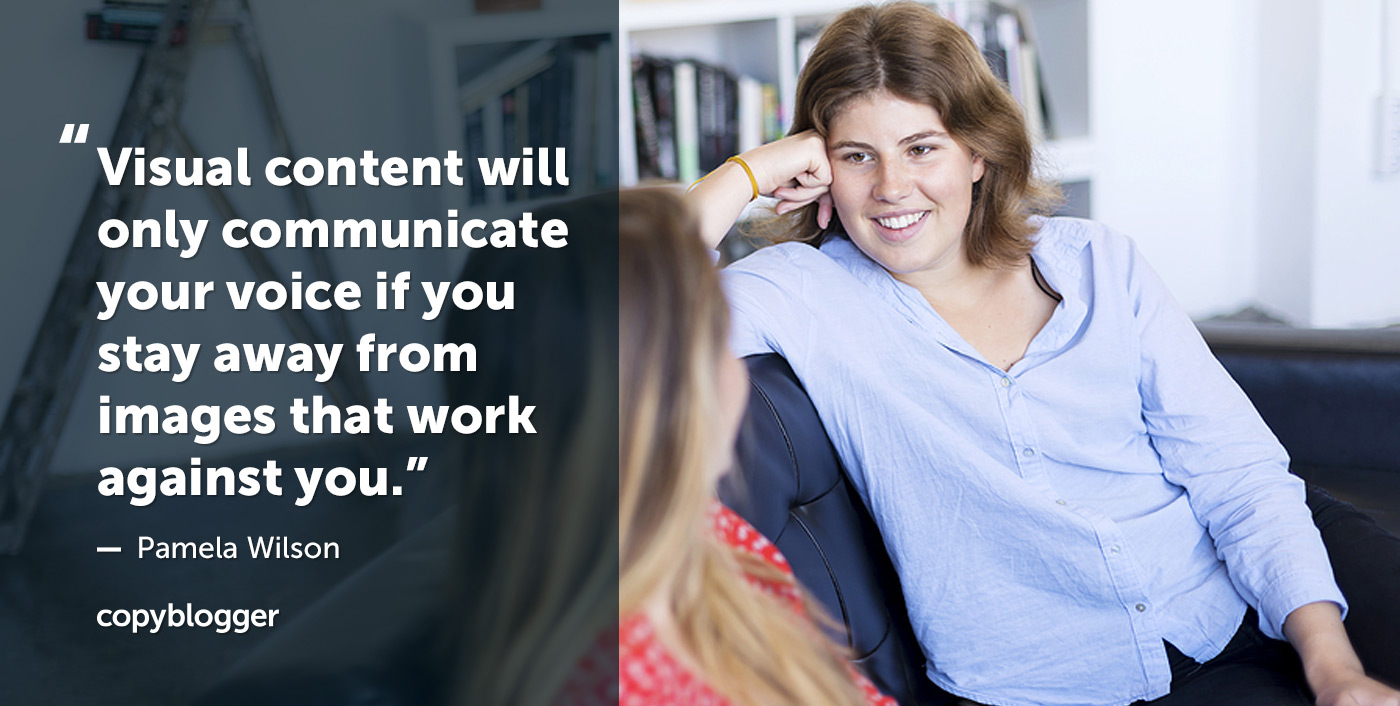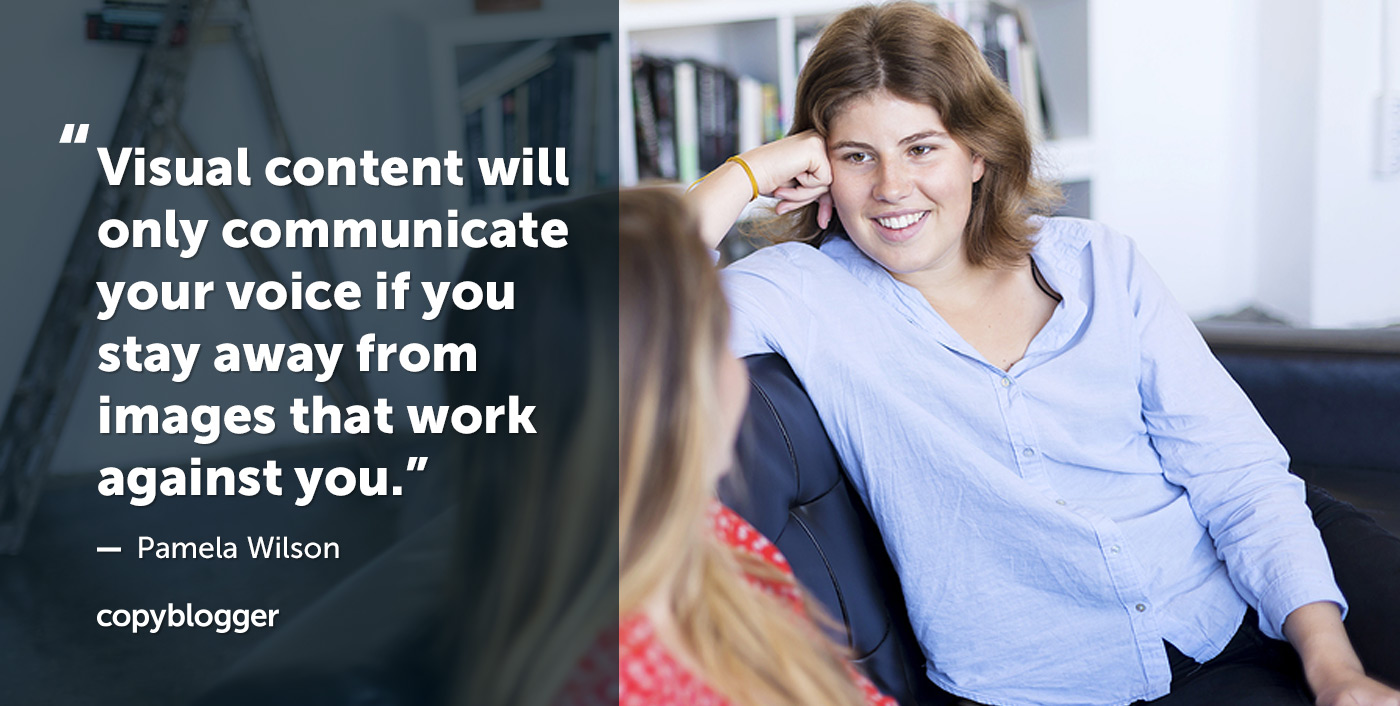Visual content marketing does these things too. Visual content marketing builds trust and authority. But visual content will only build trust and communicate your voice if you stay away from images that work against you. Read on and learn what to avoid. You’ll find this much easier to do if you understand the difference between two major categories of photos: posed and candid. Search for those, and avoid images that look posed. Identify the emotion you want to convey before you search You’re reading Copyblogger, so I know you’re a writer. Ask yourself: What emotion do I want to convey with the photo? For example, if you want to show the word “security,” you could choose an obvious symbol of security like a safe: Or you could show the feeling of security using a relatable photo of a person (or even an animal) with facial expressions and body language that show what security feels like: Which one conveys the emotion best? Become a confident visual marketer: register for this free on-demand workshop Learn more about choosing and using photos to promote your business online with my free on-demand workshop, Brand Your Business with Stunning Visuals in 30 Minutes or Less.

Is it possible for something to be both a lifesaver and a minefield?
Yes — and if you’ve spent any time searching for the perfect image on a stock photo website, you know it’s true.
Stock photos are a lifesaver — they help you use powerful visual marketing to connect with your readers.
And stock photos are a minefield — the wrong image can cause you to lose credibility, attention, and trust.
This article shares four tips for avoiding those “stock photo landmines” that end up working against you rather than for you.
It’s worth the effort.
According to a study by MDG Advertising:
“Images are powerful on their own, but when mixed with text they become even more impactful.”
They also note that:
“Articles with relevant images get 94 percent more views, on average, compared to articles without images.”
Ninety-four percent more views?
I’ll take it. How about you?
Finding the right image is a lot of work: Why bother?
Quick question:
Why do you create content marketing?
Content marketing is how we build trust and authority. It gives our businesses a voice. It shows prospects and customers that there’s a relatable human being behind the company they’re engaging with.
Visual content marketing does these things too.
Visual content marketing builds trust and authority. It gives your business a voice. It demonstrates that your business is run by humans, for humans.
But visual content will only build trust and communicate your voice if you stay away from images that work against you.
Read on and learn what to avoid.
1. Stay away from flawless and fake
I’m all for flawless examples of humanity.
For better or worse, we aren’t surprised to see perfection in our movie stars, musical artists, fashion models, and social media influencers.
But when it comes to finding a stock photo to illustrate your authoritative piece of content, relatable always wins.
Which of the images below works to illustrate a piece of content about healthy attitudes toward food?


To stay away from flawless and fake:
- Avoid images where the models are retouched and “perfect.”
- Avoid images where the facial expressions look orchestrated.
- Avoid images where the situation seems unreal or like it’s happening on a movie set.
- Avoid images that look overly posed.
You’ll find this much easier to do if you understand the difference between two major categories of photos: posed and candid.
2. Know the difference between posed and candid photos (and look for candid)
Back when I worked as a creative director, I often hired photographers to photograph client events.
At these events, there were two types of photos they could take …
Posed photos, like this, where a photographer or art director obviously arranged the subjects and…

COMMENTS